Seasoning a Red Copper pan is akin to unlocking the secrets of culinary prowess—a ritual that transforms a mere kitchen utensil into a legendary cooking companion.
Just as an artist primes their canvas before painting a masterpiece, seasoning your Red Copper pan is the initial stroke that sets the stage for culinary brilliance.
With each layer of seasoning, you infuse the pan with character, depth, and a non-stick prowess that elevates your cooking adventures to new heights.
Join me on this flavorful journey as we delve into the art and science of seasoning a Red Copper pan, where every sizzle and sear is a testament to your kitchen expertise.
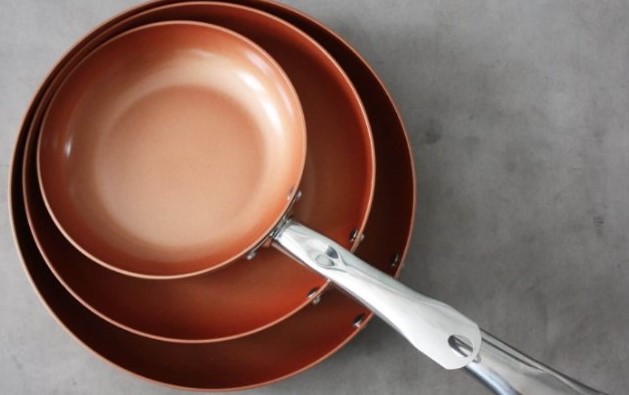
How To Season A Red Copper Pan
Seasoning a Red Copper pan is an essential step to enhance its non-stick properties and prolong its lifespan. Here’s a comprehensive guide on how to season a Red Copper pan effectively:
1. Clean The Pan
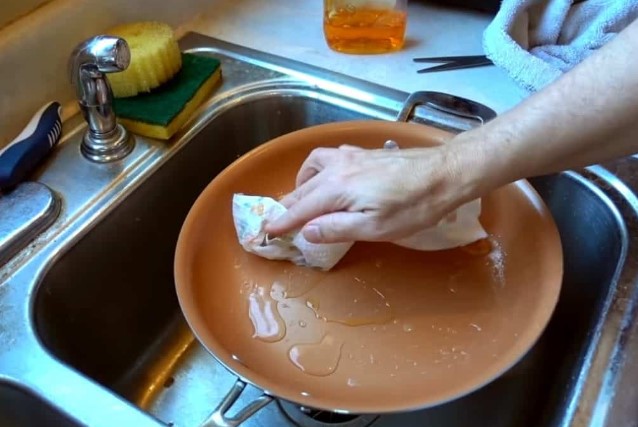
Cleaning the pan is the crucial first step in maintaining the quality and performance of your cookware. Before and after each use, it’s essential to clean the pan thoroughly to remove any food residue, oils, or stains.
Start by washing the pan with warm, soapy water and a soft sponge or cloth. Avoid using abrasive cleaners or scrubbing pads that can damage the surface. Rinse the pan thoroughly to ensure all soap residues are removed.
After washing, dry the pan completely with a towel or let it air dry to prevent water spots or rust. Proper cleaning not only keeps your pan looking pristine but also ensures hygienic cooking and preserves its non-stick properties.
2. Apply Oil To The Pan’s Interior Evenly And Heat It
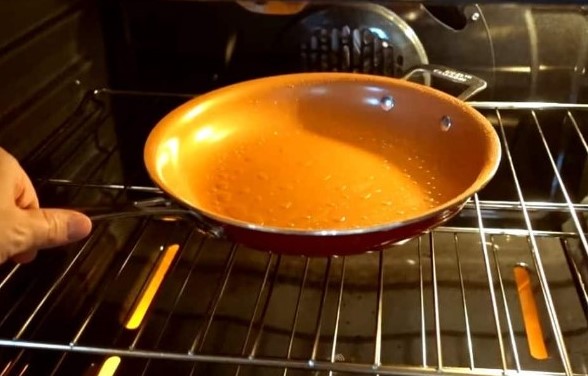
To ensure optimal cooking performance and maintain the non-stick properties of your pan, the next step after cleaning is to apply oil evenly to the interior surface before heating it.
Choose a high smoke point oil like vegetable oil, canola oil, or flaxseed oil for this purpose. Using a paper towel or a soft cloth, spread a thin layer of oil across the entire interior surface of the pan, including the sides and bottom.
Make sure the oil is evenly distributed to create a uniform coating. Once the oil is applied, heat the pan gradually over medium heat on the stove.
Heating the oiled pan helps the oil bond with the surface, creating a natural non-stick layer that enhances cooking and prevents food from sticking. Avoid using high heat, as it can burn the oil and affect the seasoning process.
3. Allow The Pan To Cool Before Wiping The Excess Oil

After heating the oiled pan to allow the oil to bond with the surface and create a non-stick coating, it’s essential to let the pan cool down before wiping off any excess oil.
This cooling period is crucial as it allows the oil to settle and form a durable layer that enhances the pan’s non-stick properties. Once the pan has cooled to a safe temperature, use a paper towel or a clean cloth to gently wipe off any excess oil from the interior surface.
Be careful not to remove too much oil, as a thin layer is necessary to maintain the non-stick coating. This step helps ensure that your pan is properly seasoned and ready for cooking, providing you with effortless food release and easy cleaning.
How To Preserve The Seasoning Of Your Red Copper Pan
Preserving the seasoning of your Red Copper pan is essential to maintain its non-stick properties and prolong its lifespan. Here are some tips on how to preserve the seasoning effectively:
Improper Cleaning And Storage
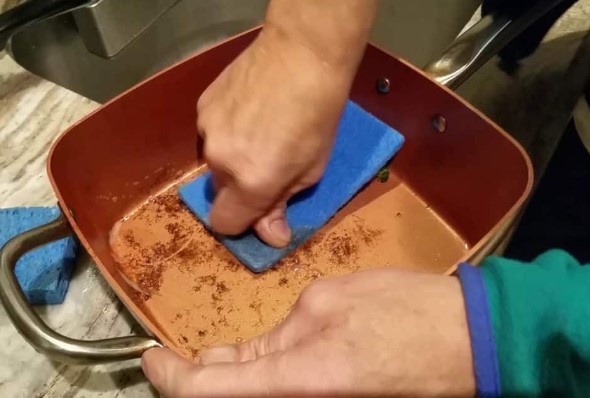
Improper cleaning and storage practices can significantly affect the quality and lifespan of your cookware, including Red Copper pans.
Using abrasive cleaners or scrubbing pads can damage the non-stick coating and remove the seasoned layer, leading to food sticking and reduced performance over time.
Similarly, storing a Red Copper pan in a damp or humid environment can cause moisture buildup, leading to rust or corrosion. Stacking heavy objects on top of the pan can also result in warping, compromising its functionality.
It’s essential to clean your Red Copper pan with gentle tools and mild detergents, ensuring thorough drying before storage in a dry, cool place.
By avoiding improper cleaning techniques and storage conditions, you can maintain the seasoning and prolong the usability of your Red Copper pan.
Cooking Acidic Foods
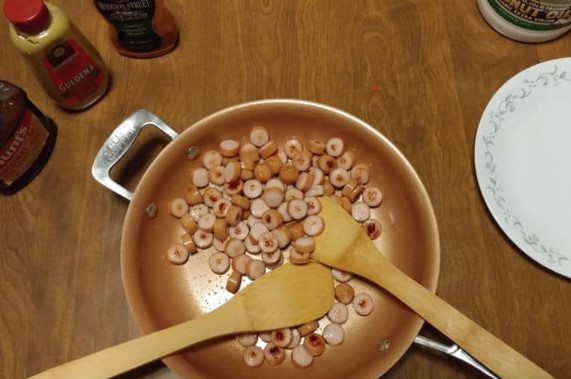
When cooking acidic foods in a Red Copper pan, it’s important to take certain precautions to preserve the non-stick coating and ensure optimal cooking results. Acidic foods such as tomatoes, citrus fruits, and vinegar can potentially interact with the pan’s surface, especially if it’s not well-seasoned or if the seasoning is worn out. Here are some tips for cooking acidic foods in a Red Copper pan:
- Use Low to Medium Heat: Avoid cooking acidic foods at high temperatures, as this can cause the acids to react with the pan’s surface more aggressively. Opt for low to medium heat settings to minimize any potential interactions.
- Use Non-Metal Utensils: When cooking acidic foods, use non-metal utensils like silicone, wood, or nylon to avoid scratching the pan’s surface. Metal utensils can damage the non-stick coating and compromise its effectiveness.
- Add Oil or Fat: Before cooking acidic foods, add a small amount of oil or fat to the pan to create a protective barrier between the food and the surface. This can help prevent direct contact between the acids and the pan, reducing the risk of damage.
- Avoid Prolonged Cooking: Try not to cook acidic foods for extended periods in a Red Copper pan, as prolonged exposure to acids can increase the likelihood of the coating wearing off or reacting with the food.
- Clean Carefully: After cooking acidic foods, clean the pan carefully using a soft sponge or cloth and mild dish soap. Avoid using harsh abrasives or scrubbers that can further damage the coating.
- Re-Season if Necessary: If you frequently cook acidic foods in your Red Copper pan and notice the non-stick performance diminishing, consider re-seasoning the pan to restore its effectiveness.
By following these tips, you can safely cook acidic foods in a Red Copper pan while minimizing the risk of damage to the non-stick coating and maintaining optimal cooking results.
Irregular Seasoning
Irregular seasoning refers to an uneven or incomplete coating of oil on the surface of a Red Copper pan during the seasoning process. This can happen due to various reasons, such as improper application of oil, inconsistent heating, or not allowing the oil to bond adequately with the pan’s surface. Irregular seasoning can lead to areas of the pan being more prone to sticking, affecting its overall non-stick performance. Here are some tips to address irregular seasoning in a Red Copper pan:
- Even Oil Application: When seasoning the pan, ensure that you apply the oil evenly across the entire interior surface, including the sides and bottom. Use a paper towel or cloth to spread the oil in a thin, uniform layer.
- Proper Heating: Heat the oiled pan gradually over medium heat to allow the oil to bond with the surface effectively. Avoid using high heat, as it can cause the oil to burn and create uneven seasoning.
- Allow Sufficient Cooling Time: After heating, let the pan cool down completely before using it or wiping off any excess oil. This cooling period helps the oil settle and form a durable non-stick coating.
- Repeat Seasoning: If you notice areas of the pan that are still prone to sticking after seasoning, consider repeating the seasoning process to ensure a more uniform coating of oil.
- Regular Maintenance: After seasoning, maintain the pan by cleaning it gently with mild soap and a soft sponge after each use. Avoid harsh abrasives or scrubbers that can damage the seasoning.
- Monitor Non-Stick Performance: Pay attention to how well the pan releases food over time. If you notice any areas where food sticks more often, it may indicate that those areas need re-seasoning or extra care during cooking.
By addressing irregular seasoning and following these tips, you can improve the non-stick performance of your Red Copper pan and enjoy hassle-free cooking experiences.
Are Red Copper Pans More Durable Than Traditional Nonstick Pans?
Red Copper pans are often marketed as more durable than traditional non-stick pans due to their construction and coating. However, the durability of a Red Copper pan compared to a traditional non-stick pan can depend on several factors.
Rust
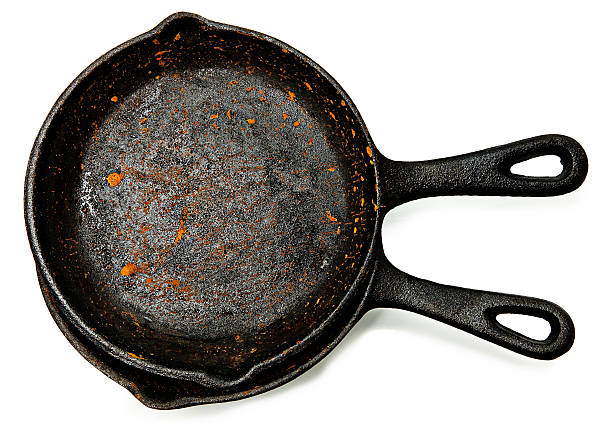
Rust is a common issue that can affect the durability and performance of cookware, including Red Copper pans. Although Red Copper pans are designed to be rust-resistant, improper care and maintenance can still lead to rust formation.
Exposure to moisture, acidic foods, harsh cleaning agents, or leaving the pan wet for extended periods can contribute to rusting.
To prevent rust on your Red Copper pan, it’s essential to dry it thoroughly after washing, avoid soaking it in water for prolonged periods, and store it in a dry environment.
If you notice any signs of rust, gently scrub the affected area with a non-abrasive sponge and a mild cleaner to remove the rust, then re-season the pan to restore its protective coating.
Regular maintenance and proper care can help extend the lifespan of your Red Copper pan and prevent rusting issues.
Heat
Heat is a crucial factor to consider when using Red Copper pans or any cookware. Red Copper pans are designed to handle high heat, making them versatile for various cooking techniques such as searing, frying, and baking.
The ceramic-infused copper coating of Red Copper pans allows for even heat distribution, which helps prevent hot spots and ensures consistent cooking results.
However, it’s important to note that while Red Copper pans can withstand high temperatures, excessive heat can still damage the non-stick coating over time. Using high heat settings constantly may lead to the coating wearing off or becoming less effective in preventing food from sticking.
To maximize the durability and performance of your Red Copper pan regarding heat:
- Use medium to medium-high heat settings for most cooking tasks. Avoid using the highest heat setting unless necessary.
- Preheat the pan gradually to allow the heat to distribute evenly across the surface.
- Use non-metal utensils to avoid scratching the coating, especially when cooking at higher temperatures.
- Monitor the pan while cooking to prevent overheating and adjust the heat as needed.
- Avoid placing an empty pan on high heat, as this can damage the coating.
By following these guidelines, you can make the most of the heat-resistant properties of your Red Copper pan while ensuring its longevity and optimal cooking performance.
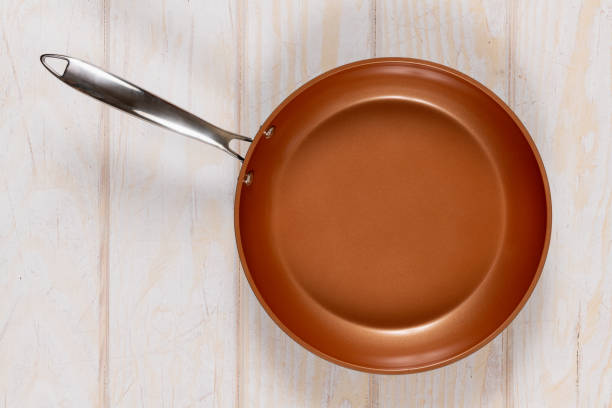
Damage To The Non-Stick Coating
Damage to the non-stick coating is a common concern with cookware, including Red Copper pans. Several factors can contribute to damage, such as using metal utensils, abrasive cleaning methods, high heat, and prolonged exposure to acidic foods. Damage to the non-stick coating can result in food sticking to the pan, uneven cooking, and reduced non-stick performance. To prevent damage to the non-stick coating of your Red Copper pan:
- Use Gentle Utensils: Avoid using metal utensils that can scratch the coating. Opt for silicone, wood, or nylon utensils instead to preserve the non-stick surface.
- Avoid Abrasive Cleaners: Use mild dish soap and a soft sponge or cloth to clean the pan after each use. Avoid harsh abrasives or scrubbers that can wear down the non-stick coating.
- Moderate Heat: While Red Copper pans can handle high heat, avoid using the highest heat setting constantly. Excessive heat can degrade the non-stick coating over time.
- Avoid Prolonged Exposure to Acidic Foods: Acidic foods like tomatoes, citrus fruits, and vinegar can interact with the coating. Use moderate amounts of acidic ingredients and avoid leaving them in the pan for extended periods.
- Re-Season as Needed: If you notice signs of damage or reduced non-stick performance, consider re-seasoning the pan to restore the coating. Follow the manufacturer’s instructions for seasoning.
- Proper Storage: Store the pan in a dry and cool place to prevent moisture buildup, which can damage the coating over time.
By taking these precautions and practicing proper care and maintenance, you can minimize damage to the non-stick coating of your Red Copper pan and extend its lifespan for optimal cooking performance.
Characteristics Of A Red Copper Pan
A Red Copper pan possesses several notable characteristics that make it a popular choice among home cooks. These characteristics include:
Safe from Synthetic Compounds
Red Copper pans are renowned for being safe from synthetic compounds, such as PFOA and PTFE. These compounds are often found in traditional non-stick coatings and can release harmful chemicals when exposed to high heat.
Red Copper pans are manufactured without these compounds, making them a healthier and safer option for cooking. This characteristic ensures that there is no risk of chemicals leaching into food, providing peace of mind to users concerned about the safety of their cookware.
Non-Stick
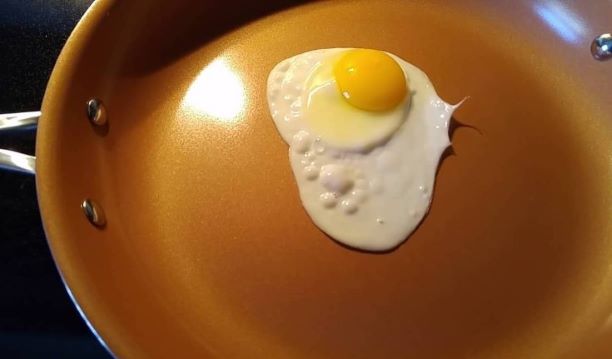
Red Copper pans are prized for their exceptional non-stick properties. The ceramic-infused copper coating on these pans creates a smooth and slick cooking surface that prevents food from sticking, making cooking and cleanup a breeze.
This non-stick feature also reduces the need for excessive oil or butter, promoting healthier cooking practices. Whether you’re frying delicate eggs, searing meats, or baking sticky desserts, the non-stick quality of Red Copper pans ensures easy food release and enjoyable cooking experiences.
Easy to Handle
Red Copper pans are designed with user convenience in mind, making them easy to handle during cooking. They typically feature ergonomic handles that are comfortable to grip, providing stability and control while maneuvering the pan.
The lightweight construction of Red Copper pans further contributes to their ease of handling, allowing users to lift, tilt, and pour with minimal effort.
Whether you’re flipping pancakes, tossing stir-fries, or transferring food from stove to oven, the easy-to-handle design of Red Copper pans enhances your cooking experience by making tasks smoother and more manageable.
Multifunctional Convection
Red Copper pans are known for their multifunctional capabilities, including convection cooking. This means that these pans can be used for a wide range of cooking methods, such as frying, sautéing, searing, baking, and even oven cooking.
Their versatile design allows users to prepare a variety of dishes without needing multiple cookware pieces.
Whether you’re making a quick breakfast, whipping up a stir-fry for dinner, or baking a delicious dessert, Red Copper pans can handle it all, making them a convenient and versatile choice for any kitchen.
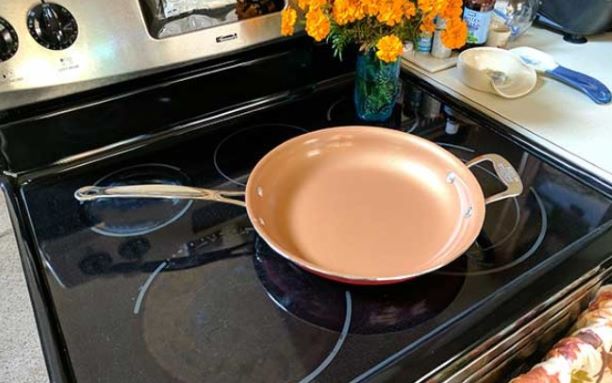
Good Heat Conductor
Red Copper pans are excellent heat conductors, thanks to their copper-infused ceramic coating. Copper is known for its superior heat conductivity, allowing Red Copper pans to distribute heat evenly across the cooking surface.
This even heat distribution helps prevent hot spots and ensures consistent cooking results, whether you’re searing meat, sautéing vegetables, or baking delicate pastries.
The ability of Red Copper pans to conduct heat efficiently not only enhances cooking precision but also reduces cooking times, making them a preferred choice for home cooks looking for high-performance cookware.
Frequently Asked Questions (FAQs) – How To Season A Red Copper Pan
Q: What is the purpose of seasoning a Red Copper pan?
A: Seasoning a Red Copper pan creates a natural non-stick surface, enhances its durability, and improves cooking performance.
Q: How often should I season my Red Copper pan?
A: It’s recommended to season your Red Copper pan every few months or as needed to maintain its non-stick properties.
Q: Can I use any oil for seasoning my Red Copper pan?
A: Yes, you can use various oils like vegetable oil, canola oil, or even olive oil to season your Red Copper pan.
Q: What is the best method to season a Red Copper pan?
A: The best method is to apply a thin layer of oil to the pan’s surface, heat it on low to medium heat, then let it cool and wipe off any excess oil.
Q: Do I need to season my Red Copper pan before the first use?
A: It’s a good idea to season your Red Copper pan before the first use to enhance its non-stick properties right from the start.
Q: Can I use my seasoned Red Copper pan for high-heat cooking?
A: Yes, once properly seasoned, your Red Copper pan can handle high-heat cooking without compromising its non-stick surface.
Q: How does seasoning benefit my cooking experience with a Red Copper pan?
A: Seasoning your Red Copper pan ensures even heat distribution, prevents food from sticking, and makes cleanup a breeze.
Q: Is there a specific temperature or time for seasoning a Red Copper pan?
A: Aim for a medium heat and let the oil heat up for a few minutes until it begins to smoke slightly before cooling and wiping off the excess.
Q; Can I use my Red Copper pan immediately after seasoning?
A: It’s best to let your Red Copper pan cool completely after seasoning before using it to cook your favorite dishes.
Q: Will seasoning my Red Copper pan affect its color or appearance?
A: Seasoning should not significantly alter the appearance of your Red Copper pan but will enhance its cooking performance and longevity.
Conclusion
In conclusion, seasoning a Red Copper pan is a simple yet crucial step in maintaining its non-stick properties and ensuring longevity.
By following the proper seasoning process, you create a natural barrier that enhances the pan’s performance, making cooking easier and cleaning a breeze.
Regular seasoning not only protects the pan but also enhances its cooking capabilities, allowing you to enjoy delicious meals without worrying about sticking or uneven heating.
With the right care and attention, your Red Copper pan can be a reliable and durable kitchen companion for years to come.
Other Articles You May Also Like:
- Are Red Copper Pans Toxic (4 Helpful Things To Know)
- Are Copper Pans Better For Cooking (4 Cool Reasons)
- What Can You Cook In Stainless Steel Pans (5 Things You Should Know)
- What Is A Nonreactive Pan (7 Eye-Opening Things To Know)
- Why Is My Cast Iron Pan Sticky After Seasoning (5 Helpful Reasons To Know)
- Is Pan Frying Healthy (8 Helpful Reasons)
- Can Copper Pans Work On Induction Hob (8 Cool Ways)
- Best Oil For Seasoning Cast Iron (5 Pro Recommended)